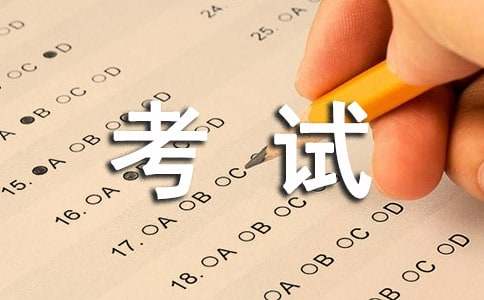- 相关推荐
托福听力考试笔记的记录技巧点拨
导语:托福听力考试的语速较快,内容涉及范围广且专业性强,因此不少考生难以立即选出答案。这就要求考生学会在听力考试时有效又快速地记录笔记。下面cnfla小编为您收集整理了托福听力考试笔记的记录技巧点拨,希望对您有帮助!

一、听懂整句话,再记关键词
在讲授记托福听力笔记的方法时,老师一定一开始就会告诉你:记关键词是最基本的技巧,所谓关键词一般是指一些重要的实词,比如说名词、动词、形容词和否定词。然而这里真正需要注意的是:我们要先听懂这个句子,然后立刻同步分析并扑捉住哪个词是这个句子里最重要的信息。做这个的目的是用关键词来帮助你在做题时回忆起整个句子。
举个例子,下面的'对话中,学生向老师询问怎样写报道,老师快速地说出了一连串意见,这里就很可能出多选题。这时我们就需要在笔记中体现所有的意见。那么我们该记哪些词?
Student: Do you have any advice on how I should cover the story?
Advisor: Well, Max will want to talk to you but I am sure he will tell you to find out things like why the physics department’s worried about enrollment?Has the number of students been getting smaller in recent years? By how much? What kinds of plans are they considering to address this problem?
如果用上刚刚所说的方法,上面对话中画线部分的具体意见你需要记下来的词汇应该是这样:worried?No. stu?how?plan?
二、记录句子逻辑关系词,掌握易出考点
逻辑是连接一篇文章的筋骨脉络,每一篇托福听力文章都有着严谨的文章层次和逻辑关系。句子之间常见的逻辑关系有转折、对比、因果、顺承、举例等。逻辑是通过逻辑词和逻辑短语来体现的。一旦出现逻辑词,就很可能跟出考点,所以听清逻辑词,并迅速记录下来,能够使得文章内部的关系和顺序一目了然。
常用速记符号 逻辑词
≠ different, unlike, contradict, rather than
<> belong to, be part of
∵due to, because, reason
∧ but, however, yet, in fact, actually, while
老师提醒大家,拥有良好的逻辑意识,并且能够掌握常见的逻辑词以及短语,这样无论是在测试阅读,听力,口语或作文部分的`时候都是一个优势。如果你能够在平时的听力训练中注意总结这些逻辑词和短语的用法,并将此运用在自己的口语和写作部分,那一定能够进入高分档。
三、听不懂的别纠结,重点记下主要信息
相信大多数同学都有这样的体会:当我们在听文章的过程中,听到一个不太懂的单词或句子时,会把思维停留在这个词或句子上,同时漏听了接下来的信息,等回过神儿来才发现已经不知道文章说到哪儿去了。
其实在托福听力考试中,当出现重要的信息或者生僻的单词的时候,讲话者绝大部分情况下都会加以解释,甚至是反复解释这个信息或单词。所以我们需要做的就是听到生词的时候忍住回想的冲动,硬着头皮往下听,听懂生词后面的解释之后,在笔记中记下主要的信息。而且,我们需要注意的是,托福听力中反复出现、解释的信息一定是重要信息,极有可能是考点,因此也是需要我们重点记笔记的地方。
下面老师给大家举一个例子。来看看你能分辨出下面的段落说了几个重要信息吗?
Ok, a lot of people think of earth’s orbit around the sun as being perfectly circular, as smooth and as regular as, say, the way that hands move on a well-made watch, but it just doesn’t work that way. You are probably aware that the earth’s orbit around the sun, it is not shaped like a perfect circle. It is more of an oval, it is elliptical. But the shape of this orbit isn’t consistent; it varies over time, over a period of about a thousand years. Sometimes it is a little more circular, sometimes it is more elliptical. And when earth’s orbit is more elliptical, earth is actually closer to the sun during part of the year. Which makes earth, and in particular, the northern hemisphere, warmer. And why is that important? Well, because most of the planet’s glaciers are in the northern hemisphere, and if it gets too warm, then glaciers will stop forming. And we’ve already talked about how that affects earth’s overall temperature。
其实别看这个段落这么长,其实它只传达了三个重要信息,也就是说归纳起来只有三个重点,其余的部分都是对重点的解释。
第一个信息:地球绕太阳的轨道是椭圆形的。原文用了5句话来反复解释这个信息,而且虽然出现了相对生僻的单词oval,但出题者怕考生听不懂又用了一个比较常见的elliptical来解释。如下:
Ok, a lot of people think of earth’s orbit around the sun as being perfectly circular, as smooth and as regular as, say, the way that hands move on a well-made watch, but it just doesn’t work that way. You are probably aware that the earth’s orbit around the sun, it is not shaped like a perfect circle. It is more of an oval, it is elliptical。
第二个信息:这个轨道形状会变。这里又用了5句话来反复解释,其中出现了一个稍微有些难度的单词consistent,而且防止有些考生不认识这个词出题者又苦口婆心的给你解释了这个现象。有时候这个轨道形状圆点儿,有时候更椭圆点儿,更椭圆点儿的时候,地球更接近太阳。这里说的就是我们中学地理知识中的近日点这个概念。
But the shape of this orbit isn’t consistent; it varies over time, over a period of about a thousand years. Sometimes it is a little more circular, sometimes it is more elliptical. And when earth’s orbit is more elliptical, earth is actually closer to the sun during part of the year。
第三个信息:形状的变化会影响地球上冰川的形成。说话者再一次用了5句话来解释这个信息,并且怕你不知道这里要出考点,还用了反问句提醒你。
Which makes earth, and in particular, the northern hemisphere, warmer. And why is that important? Well, because most of the planet’s glaciers are in the northern hemisphere, and if it gets too warm, then glaciers will stop forming. And we’ve already talked about how that affects earth’s overall temperature。
所以,虽然你听到了这么多词汇和句子,但其实你的.笔记上需要记的只是这三个主要信息。由此可知,ETS是一个很人性化的的组织。当你遇到听不懂的信息的时候,你要勇敢坚决地继续往下听,你的思维要同时跟着说话人走,绝不能出现自己的思维断层。
四、了解托福听力讲座题的套路,做到心中有数,不慌不乱
托福听力讲座部分的文章套路是有很强的规律性的,一般来说分为以下6个步骤:
第一步:回顾上节课内容
第二步:引出专有名词(这节课的'主题)
第三步:介绍这个专有名词(一种现象,或人物,或历史事件)
第四步:通过列举分类的方式或者介绍流程的方式来阐述主题的具体内容
第五步:在整个讲座过程中穿插学生提问或者老师自己提问,之后给出解答(每个提问处都很可能是考点)
第六步:最后对主题进行总结或升华(例如会提到讲座主题对过去或未来产生的影响或深远的意义等)
当你了解了托福听力讲座部分的套路后,你需要在平时的笔记训练过程中有意识地把所听到的信息归纳进这个套路里,这样能够帮助你更好地把握文章结构,甚至能够帮助你达到没听懂每一个信息也能做对题的境界。
【托福听力考试笔记的记录技巧点拨】相关文章:
雅思听力考试技巧:猜词技巧08-13
托福口语考试三个高分技巧02-20
雅思考试听力技巧指导:数字类10-25
攻克雅思听力的有效技巧08-16
中考英语听力的答题技巧06-20
英语听力技巧方法总结11-14
新旧托福考试对比06-06
英语六级考试听力短文六大技巧10-19
中考英语听力三大技巧04-26
中考英语听力能力提升技巧11-10